Picture this: a towering, cone-shaped mountain spewing out fiery lava and ash. That’s a cinder cone volcano, a real-life spectacle of nature’s explosive power. Let’s dive into the fascinating facts that make these volcanic wonders so intriguing. How often do they erupt? What makes them so high? How old are they? Get ready to unravel the secrets of these fiery giants!
Facts About Cinder Cone Volcanoes:
Ever heard of a volcano that looks like a giant ant hill made of fire rocks? That’s a cinder cone volcano in a nutshell! Imagine molten rock, called magma, deep underground, getting super bubbly with trapped gas. It’s like shaking a soda bottle – eventually, all that pressure needs to go somewhere. BOOM! The volcano erupts, launching fiery bits of lava and ash, called cinders, into the air. These cinders cool down mid-air and rain down around the volcano’s vent. Picture a pile of ash building up after a bonfire, but on a much grander, hotter scale. Over time, all those cinders pile up, creating a cone-shaped hill with a bowl-like crater at the top – a cinder cone volcano!
Here’s what makes them even cooler:
- They’re the speed demons of the volcano world. Most cinder cones form incredibly fast, sometimes within a matter of days or weeks! Of course, “fast” in geology is relative – we’re still talking about natural processes here.
- They’re like the little siblings of bigger volcanoes. You’ll often find cinder cones chilling on the slopes of larger volcanoes, like stratovolcanoes.
- They’re short-lived but dramatic. Cinder cone eruptions might not last long, but they sure know how to put on a show with their explosive bursts of ash and cinders. It’s like a spectacular fireworks display, Mother Nature style.
- They help us understand Earth’s fiery insides. Scientists study cinder cones to learn about the types of magma that erupt from volcanoes, the way eruptions happen, and how these processes shape the landscape around them.
So, next time you picture a volcano, don’t just think of the classic cone shape. Remember the cinder cones – those smaller, feistier volcanoes that add a whole lot of spice to our planet’s geology!
What are three facts about cinder cone volcanoes?
We’ve talked about how explosive those cinder cone eruptions can be, but what else makes these volcanoes stand out? Here are three fascinating things about them:
- Cinder cone volcanoes are essentially symmetrical hills made of volcanic rubble. They’re not giants like their stratovolcano cousins; they’re more like smaller hills, built almost entirely from chunks of cooled lava called “cinders,” which are kind of like volcanic gravel.
- They’re surprisingly steep! Imagine trying to climb a hill that rises at an angle greater than 30 degrees – that’s what you’re up against with a cinder cone. And right at the top, where you’d expect a peak, there’s a big, bowl-shaped crater. It’s like the volcano took a giant scoop out of its own summit!
- They form in a way that’s similar to a shaken-up soda bottle exploding. It all starts with gas-rich, somewhat runny lava. This type of lava doesn’t flow smoothly; instead, when it erupts, it bursts into the air as fiery spray. These molten blobs cool and harden mid-air, raining down as cinders that pile up around the vent, gradually building that cone shape we’ve been talking about.
Scientists are still unraveling many mysteries surrounding volcanic activity, and cinder cones provide valuable clues. By studying their shape, composition, and the way they erupt, we can learn a lot about the forces at work deep within the Earth and the potential hazards posed by different types of volcanoes.
How many times can a cinder cone volcano erupt?
So, we’ve been talking about cinder cone volcanoes, and you might be wondering how many times these fiery mountains can blow their top. Well, cinder cones are typically one-hit wonders. They usually erupt only once because the eruption that forms a cinder cone is so powerful that it often uses up all the available magma in one go. Once the magma solidifies inside the volcano’s vent, it’s like plugging up the system, making future eruptions less likely.
However, there are exceptions to the rule. While most cinder cones stick to the single eruption script, in some cases, a cinder cone might surprise us with multiple eruptions over time. But hold on, don’t imagine a continuous fiery spectacle! These additional eruptions are usually much smaller and less frequent than the initial grand show. Plus, each new eruption might even create a brand-new cone right next to the original one, forming what looks like a cluster of volcanic peaks.
Scientists are still unraveling the mysteries of volcanic behavior. While we have a general idea about cinder cone eruptions, ongoing research might reveal even more about these fascinating geological formations.
How Tall is a Cinder Cone Volcano?
We’ve been talking about cinder cone volcanoes, these awesome mini-mountains built by fiery outbursts from the Earth. You might imagine them towering over the landscape, but they’re actually more like the little sibling compared to some of the giant volcanoes out there. While their size can vary quite a bit, a typical cinder cone volcano might only reach a height of a few hundred feet.
Now, don’t let their smaller stature fool you; cinder cones are still a force to be reckoned with. These volcanoes get their name from the way they’re formed. Imagine a super-heated mix of molten rock, gas, and ash blasting out of the Earth. This mixture, called magma when it’s underground and lava when it erupts, doesn’t flow out gently. Instead, it’s blasted out in a shower of fiery bits and pieces. These fragments, which cool and solidify pretty quickly in mid-air, are what geologists call “cinders” or “lapilli.” These cinders pile up around the volcano’s vent, creating that classic cone shape we’ve been talking about.
The exact height a cinder cone reaches depends on a bunch of factors. How often the volcano erupts, how powerful those eruptions are, and even the type of magma bubbling up from below can all play a role. Some cinder cones are one-hit wonders, formed in a single, dramatic eruption. Others might sputter and spit for years, slowly adding layer upon layer of cinders until they reach a respectable height. There are even some cinder cones out there that top out at over 1,000 feet!
It’s worth mentioning that cinder cone volcanoes often pop up near larger volcanoes, like those massive stratovolcanoes you see in pictures. But cinder cones can also appear on their own, forming in areas where magma finds its way to the surface through cracks and fissures.
One of the coolest things about cinder cones is that they give scientists a peek into the past. By studying the layers of cinders and ash, geologists can learn a lot about a region’s volcanic history. It’s like reading a history book written in fire and rock!
So, while they might not always be the tallest mountains on the block, cinder cone volcanoes are a fascinating and powerful reminder of the incredible forces at work beneath our feet.
How Old is a Cinder Cone Volcano?
We’ve talked about what cinder cone volcanoes look like and how they erupt, but have you ever wondered how long these fiery mountains actually stick around? Well, just like us, cinder cones can be young and sprightly or old and wise. Their age, however, can vary wildly. Some might just be babies, formed in a geological blink of an eye – say, a few decades. Others are ancient giants, standing tall for thousands of years!
So, what makes some cinder cones age faster than others? Let’s dig in!
What Influences a Cinder Cone’s Age?
Think of it like baking a cake. The ingredients and how long you bake it will change the outcome. Similarly, several factors play a role in determining the lifespan of a cinder cone:
- The Magma Recipe Matters: Just like cake batter, magma can be thick and gooey (viscous) or thin and runny. Thick magma tends to create steeper cones that don’t last as long. On the other hand, runny magma forms flatter cones that can hang around for much longer.
- Explosive Energy: Imagine a firecracker versus a bonfire. A powerful eruption is like that firecracker, quickly piling up cinders and forming a cone in a matter of weeks or months.
- Eruption Stamina: Some cinder cones are the result of a single, short burst of volcanic activity. Others are built up over time by multiple eruptions, like adding layers to a cake. The longer the eruptions go on, the older the cone can become.
Unraveling the Mysteries of a Volcano’s Age
Figuring out the age of a cinder cone is like solving a puzzle. Scientists use a few different methods to piece together its history:
- Carbon Dating Clues: Scientists can use carbon dating on organic material (like burnt plants) found in or near the cone to estimate its age.
- Layer by Layer: Scientists study the layers of volcanic material in cinder cones to understand the order of eruptions, which gives clues about its age.
- Magnetic Memories: The Earth’s magnetic field has flipped directions many times throughout history. Scientists can analyze the magnetic properties of the volcanic material in a cinder cone and compare it to the Earth’s magnetic timeline to figure out when it formed.
Why Does a Volcano’s Age Matter?
Knowing how old a cinder cone is isn’t just about satisfying our curiosity. It’s actually really important for a few reasons:
- Volcanic Diary: Studying the age of cinder cones in an area helps us understand the history of that region.
- Safety First: Understanding the age of a volcano can give us clues about its potential to erupt again. Younger cones might be more prone to future eruptions, while older ones might be dormant.
- Changing Planet: By tracking the ages of volcanoes over time, scientists can study how volcanic activity on Earth has changed, which can be linked to broader geological processes.
A World of Volcanoes Still to Discover
While we’ve learned a lot about cinder cones and how to determine their age, there’s still so much more to uncover. New research and technology are constantly evolving, and with each discovery, our understanding of these fascinating geological formations grows. So, the next time you see a cinder cone volcano, take a moment to appreciate its age and the story it tells about our planet’s fiery past.
What are the 3 major volcano cone types?
Volcanoes actually come in distinct shapes, and these shapes tell us a lot about how the volcano erupts and what it’s made of. The three cone types you should know are stratovolcanoes, shield volcanoes, and cinder cones. Let’s break them down:
1. Stratovolcanoes: The Majestic Giants
Stratovolcanoes are those picture-perfect, cone-shaped mountains we often imagine when we think of volcanoes. They’re made up of layers of lava and ash. These layers suggest that stratovolcanoes are formed by a mix of explosive eruptions and calmer periods where lava flows out more gently. This constant switching between fiery outbursts and slow, oozing lava creates those steep, dramatic slopes stratovolcanoes are known for. Some famous examples of these majestic giants include Mount Fuji in Japan and Mount Vesuvius in Italy.
2. Shield Volcanoes: The Gentle Giants
Shield volcanoes are the laid-back giants of the bunch. They’re built almost entirely from flowing lava, which spreads out over large distances before it hardens. This creates a volcano with a much gentler slope, kind of resembling a warrior’s shield lying on the ground – hence the name. Eruptions from shield volcanoes are usually less explosive than their stratovolcano counterparts and often involve lava just oozing out of vents and cracks. This doesn’t mean they’re harmless, though! These eruptions can still be incredibly powerful and destructive. Think of the Hawaiian Islands – they’re actually the peaks of massive shield volcanoes rising from the ocean floor!
3. Cinder Cones: The Little Firecrackers
Cinder cones are the smallest and most common type of volcano. Imagine a giant, messy pile of volcanic rock fragments and ash – that’s essentially what a cinder cone is. They form when a volcano erupts explosively, throwing bits of molten rock and ash into the air. This material, called tephra, then falls back down around the vent, building up a cone-shaped hill over time. Cinder cones might be small, but they can pack a punch, often erupting multiple times throughout their lifespan.
So, why is it important to know about these different volcano types?
Well, understanding the different shapes and formations of volcanoes helps scientists predict how they might behave. Knowing whether a volcano is likely to have a slow lava flow or a massive explosive eruption is crucial for keeping people safe and understanding the potential impact on the surrounding environment.
Keep in mind: Our understanding of volcanoes is always evolving. Researchers are constantly making new discoveries and refining what we know about these fascinating geological features.
Is a Cinder Cone the Smallest Volcano?
Cinder cones are definitely on the smaller side, known for their steep, cone-like shape. But are they always the smallest? Well, it’s not quite as simple as that.
Cinder cones are like the sprinters of the volcano world. They form quickly from explosive eruptions, spitting out lava that hardens into little bits called cinders. This loose, gravelly material builds up around the vent, creating that classic cone shape. They’re not generally known for massive eruptions like their bigger cousins, the stratovolcanoes or shield volcanoes.
Now, because of how they form, cinder cones are often pretty small, maybe a few hundred meters high. However, there are other volcanic features out there that can be even smaller, like lava domes, which are formed by thick, sticky lava that oozes out slowly and piles up around the vent. They can be pretty small, even just a few meters high. And then there are volcanic fissures, which are basically cracks in the earth’s crust where lava erupts. These can be very long, but they’re not usually very tall.
So, while cinder cones are definitely among the smallest types of volcanoes, it’s not always a guarantee that they’re the absolute smallest. The world of volcanoes is full of surprises, and there are always exceptions to the rule! Scientists are still learning about all the different shapes and sizes that volcanoes can take.
What are 5 facts about composite volcanoes?
We’ve talked about what makes composite volcanoes stand out – their impressive height and the explosive way they erupt. Now, let’s dive into five fascinating facts about these geological giants:
- They’re like layer cakes, but instead of frosting and sponge, it’s lava and ash. Imagine a volcano erupting, spewing out lava that hardens and then gets covered by ash. Over time, this process repeats, creating layers upon layers of volcanic material. That’s exactly how composite volcanoes are formed! This layered structure is what gives them their characteristic steep slopes.
- Their eruptions are the stuff of legends (and often, disasters). Remember Mount Vesuvius burying Pompeii under a thick blanket of ash? That’s a classic example of a composite volcano eruption. These eruptions are typically explosive and can be incredibly dangerous due to the massive amounts of ash, gas, and molten rock fragments they release.
- They’re not just random mountains; they often pop up where tectonic plates collide. The Earth’s crust is made up of giant plates that are constantly moving. When two plates collide, one might slide under the other (that’s called subduction). This process creates magma, which rises to the surface and erupts, eventually forming a composite volcano.
- They’re not done growing after one eruption. We’re talking thousands, even millions of years! Building a composite volcano is a slow and steady process. Each eruption adds a new layer, gradually increasing the volcano’s height and size. Some composite volcanoes have been active for hundreds of thousands, even millions of years!
- Scientists are always trying to predict their next move. Given their potential for destruction, understanding composite volcanoes is crucial. Researchers constantly monitor these volcanoes for signs of activity, trying to predict future eruptions. While we’ve come a long way, predicting volcanic eruptions is still a complex challenge.
Learning about composite volcanoes gives us a glimpse into the immense power of nature. It also reminds us of the importance of scientific research in understanding and mitigating the risks associated with these geological wonders.
What are three facts about shield volcanoes?
We’ve already talked about how different shield volcanoes look from other types of volcanoes, but let’s dive into some more fun facts about these gentle giants!
- They’re like massive pancakes! Shield volcanoes are known for their wide, gently sloping sides. This unique shape happens because the lava that erupts from shield volcanoes is super runny, so it travels far and wide before it cools down and hardens.
- They’re not afraid to let loose (frequently)! Shield volcanoes are pretty active. They erupt frequently, but these eruptions are usually pretty mellow. Instead of violent explosions, think more along the lines of a slow and steady flow of lava.
- You can find them all over the place! Shield volcanoes aren’t picky about where they pop up. They’re found in all sorts of places around the world, from the tropical paradise of Hawaii to the chilly landscapes of Iceland. In fact, some scientists believe that shield volcanoes might even exist on other planets like Mars and Venus!
It’s important to remember that our understanding of volcanoes is always evolving as scientists make new discoveries. There’s still so much to learn about these incredible geological formations!
What causes a cinder cone volcano?
So, what exactly makes cinder cone volcanoes erupt? Molten rock, or magma, lies deep beneath the Earth’s surface. This magma is chock-full of trapped gases, kind of like a shaken soda bottle just itching to burst.
This gas-rich magma starts to rise up through cracks and weaknesses in the Earth’s crust. As it gets closer to the surface, the pressure surrounding the magma lessens. This is where it gets interesting – the dissolved gases, no longer held back by the immense pressure, begin to expand rapidly. It’s like popping that soda bottle – the sudden release of pressure makes everything explode outward!
The rapid expansion of gases in the magma causes it to blast apart into tiny, hot fragments. These fragments, called cinders, are hurled high into the air, and as they cool and solidify, they fall back down around the volcanic vent, creating that classic cone shape we associate with cinder cone volcanoes.
The type of magma involved plays a crucial role in whether or not a cinder cone volcano forms. Cinder cones are more likely to pop up from magma that’s low in silica. Silica, the main ingredient in glass, makes magma thick and gooey. Low-silica magma is more fluid and allows those dissolved gases to escape more easily – hence, the explosive eruptions!
It’s important to note that our understanding of volcanoes is always evolving as scientists conduct further research. While this explanation represents the prevailing theory, there may be nuances and complexities we are still discovering.
What are three facts about stratovolcanoes?
Let’s dive into three cool things about stratovolcanoes:
- They’re built like layer cakes (but way hotter): Instead of tasty treats, imagine alternating layers of lava, ash, and volcanic debris. These layers build up over time, recording a history of the volcano’s activity. Sometimes, it erupts with a bang, spewing ash and rocks (that’s the “ash layer”). Other times, it’s a slower, oozing flow of lava (the “lava layer”).
- Explosive personalities: Unlike their calmer cousins, the shield volcanoes, stratovolcanoes are known for their dramatic eruptions. Their magma (the molten rock beneath the Earth’s surface) is thick and gooey. This makes it harder for gas to escape, building up pressure until… BOOM! That’s when you get massive explosions, sending ash clouds high into the atmosphere and even creating fast-moving flows of hot gas and debris (pyroclastic flows).
- Stars of the landscape: Some of the most famous mountains in the world are stratovolcanoes. Think Mount Fuji in Japan, a symbol of beauty and cultural significance. Or Mount Vesuvius in Italy, infamous for burying Pompeii. Even Mount St. Helens in the US, known for its dramatic 1980 eruption, is a stratovolcano. Their towering, cone-shaped forms make them iconic landmarks, reminding us of the incredible power hidden within our planet.
Want to learn more? There’s a whole world of fascinating information out there about volcanoes! Scientists are constantly learning more about how they form, erupt, and impact our planet. Go explore!
Did you know that the beautiful city of Flagstaff was formed by a dormant volcano that last erupted 300,000 years ago? Learn more about the Flagstaff volcano here.
Arizona is known for its stunning desert landscape, but few people know that there are active volcanoes in the state. Explore the volcanic wonders of Arizona.
- Unveiling the Enigma: Mansoureh Khojasteh Bagherzadeh’s Public Appearances & Private Life in Iran - July 18, 2025
- Unveiling the Mystery: Mansoureh Khojasteh Bagherzadeh’s Husband: A Rare Glimpse into a Private Life - July 18, 2025
- Unveiling Masoud Khamenei’s Mother: Power, Influence, and Iran’s Future - July 18, 2025
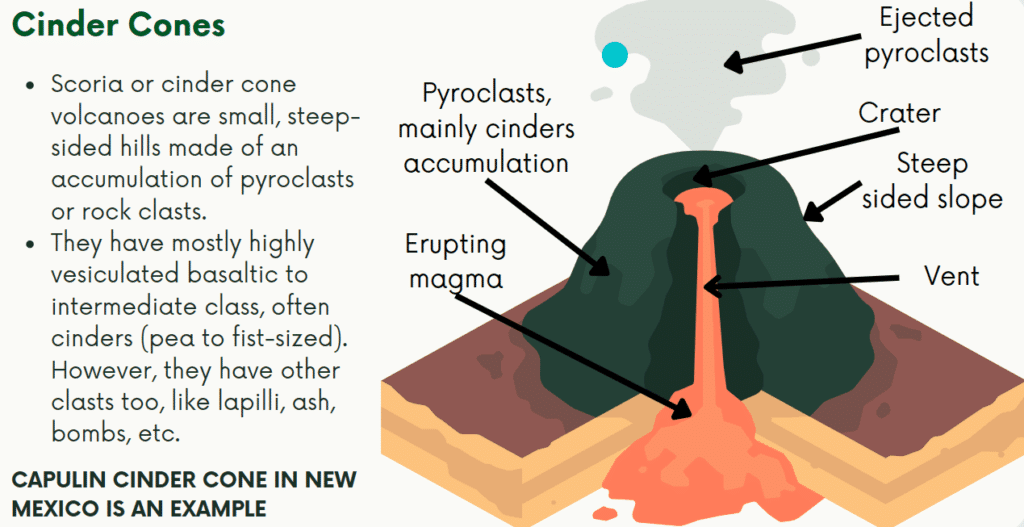
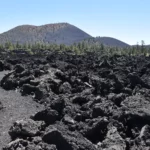
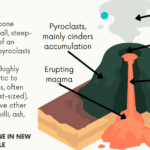
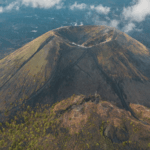
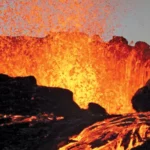
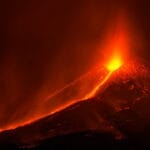
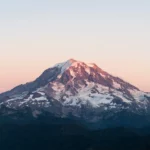










2 thoughts on “Unveiling the Fiery Truth: Facts About Cinder Cone Volcanoes”
Comments are closed.